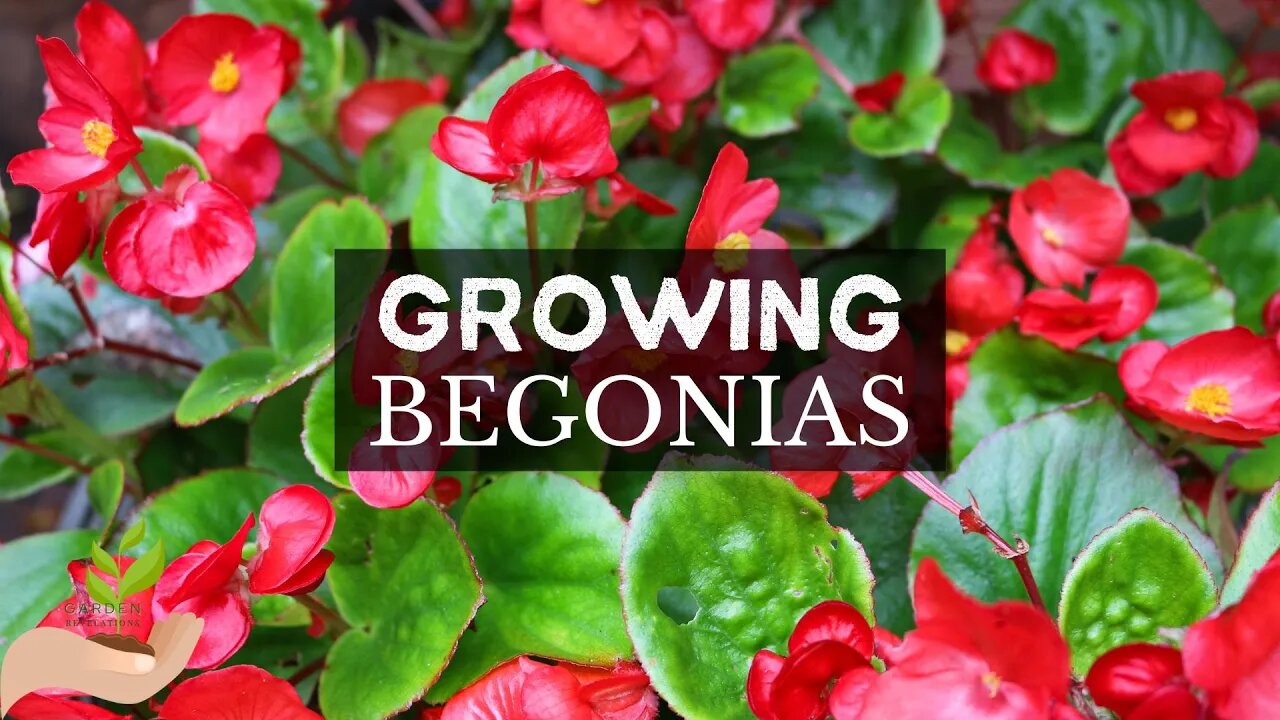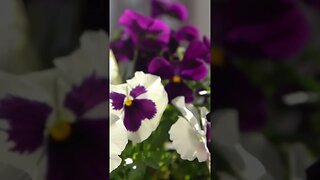Premium Only Content

GROWING BEGONIAS: Beautiful, colorful flowers with many varieties and colors to choose!
Begonias are a popular flowering plant. They are best known for their bright, showy blooms and distinctive foliage. With over 1,800 species, Begonia is a genus of perennial plants in the family Begoniaceae. They are native to tropical and subtropical regions, including Africa, Asia, and the Americas. In this content, we will explore the Latin name, soil, and light conditions, USDA zones, the appearance of flowers, leaves and stems, fragrance, how to plant and maintain, and what pollinators they attract. The genus Begonia belongs to the family Begoniaceae, and the scientific name for Begonia is Begonia L. Soil and Light Conditions. Begonias prefer well drained, moist soil that is rich in organic matter. They require partial shade to thrive, as direct sunlight can scorch their leaves and flowers. Begonias grow best in temperatures ranging from 60 to 75 degrees Fahrenheit. They grow well in the ground or in containers. They're charming in hanging baskets on a deck or porch. What Are the Best USDA Zones for Begonias? Begonias are suitable for USDA hardiness zones 10 and 11. But some varieties can be grown in cooler zones with special care, such as protecting the blossoms from late season frosts. The appearance of Flowers, Leaves, and Stems. Begonias come in a wide range of flower colors, including pink, red, orange, white, and yellow. Some species have double flowers, while others have single or ruffled petals. Depending on the species, the flowers can be as small as a dime or as large as a dinner plate. Begonia leaves are also incredibly diverse, with shapes ranging from circular to oblong and sizes ranging from tiny to more than a foot in diameter. The leaves can be smooth, waxy, or hairy, and they may have variegated patterns of different colors. The stems of begonias are typically succulent and contain a milky sap. Some species have upright, woody stems, while others have trailing or creeping stems. How to Plant and Maintain Begonia Flowers. To plant begonias, choose a location with partial shade and well drained soil. Dig a hole twice the size of the plant's root ball and place the plant in the hole. Water thoroughly and add a layer of mulch around the base of the plant. Begonias require regular watering, especially during hot, dry weather. They prefer consistently moist soil but not waterlogged, so be careful not to overwater. Fertilize your begonias once a month during the growing season with a balanced, water soluble fertilizer. To maintain your begonias, pinch any leggy stems to encourage bushy growth and remove dead or damaged leaves. Look out for pests such as spider mites and aphids, and treat them promptly if you notice an infestation. What Pollinators Will Your Begonias Attract? Begonias are known to attract various pollinators, including bees, butterflies, and hummingbirds. Their bright, showy blooms and sweet nectar make them a popular pollinator choice. Begonias are a diverse and beautiful group of flowering plants that can add color and interest to any garden. With proper care and maintenance, they can thrive in many soil and light conditions and attract many helpful pollinators to your yard.
Connect with us
Facebook: https://www.facebook.com/GardenRevelations
Web: https://www.tayloeslawncare.com
and https://www.gardenrevelations
MeWe: https://mewe.com/p/diyhomegarden
CREDITS:
Image and music licensed via Canva Pro
Video scripts and audio production by https://www.wordinnovations.com
-
 0:56
0:56
Garden Revelations
1 year agoPansies: The perfect way to add color to a fall garden (lasting to early winter in North Carolina)
101 -
 48:41
48:41
The Mel K Show
3 hours agoMel K & Aaron Day | Wake up! Walking Blindly into Totalitarian Technocracy | 7-22-25
15.5K3 -
 LIVE
LIVE
Anthony Rogers
1 day agoEpisode 375 - Randy Valerio
65 watching -
 1:32:14
1:32:14
Kim Iversen
5 hours ago"Obama Belongs In Jail!" Tulsi Gabbard Exposes Entire Russiagate Hoax
101K92 -
 LIVE
LIVE
AlphaZeroOmega
1 hour agoHitman: ⚔ Ozzy Osbourne Tribute ⚔ | 🚨Rumble Studio Direct RTMP🚨
22 watching -
 2:16:28
2:16:28
Robert Gouveia
5 hours agoBarrack Obama is GUILTY!! Declassified Docs RELEASED! Ghislaine Maxwell MEETING!!
45.3K17 -
![[LIVE] Kirby and The Forgotten Land | First Playthrough | 4 | Forbidden No Longer/Forgotten No More](https://1a-1791.com/video/fww1/fe/s8/1/M/2/H/4/M2H4y.0kob-small-LIVE-Kirby-and-The-Forgotte.jpg) LIVE
LIVE
Joke65
53 minutes ago[LIVE] Kirby and The Forgotten Land | First Playthrough | 4 | Forbidden No Longer/Forgotten No More
4 watching -
 LIVE
LIVE
GritsGG
1 hour agoWin Streaking! Most Wins 3100+! 🔥
19 watching -
 LIVE
LIVE
charwinslow
2 hours ago🐈 Pokemon: Violet IRL Team Nintendo Switch 2 playthrough!
37 watching -
 LIVE
LIVE
RaikenNight
5 hours ago $0.12 earnedLets Play Games As We Rock Out To Crazy Train!
28 watching